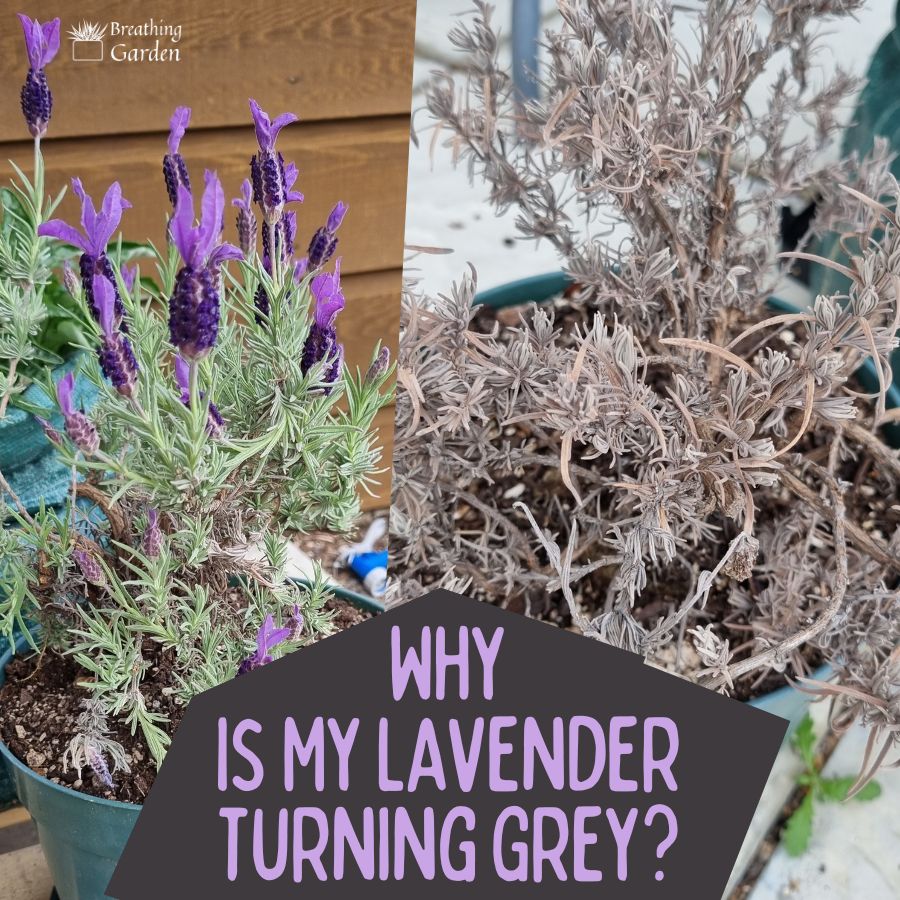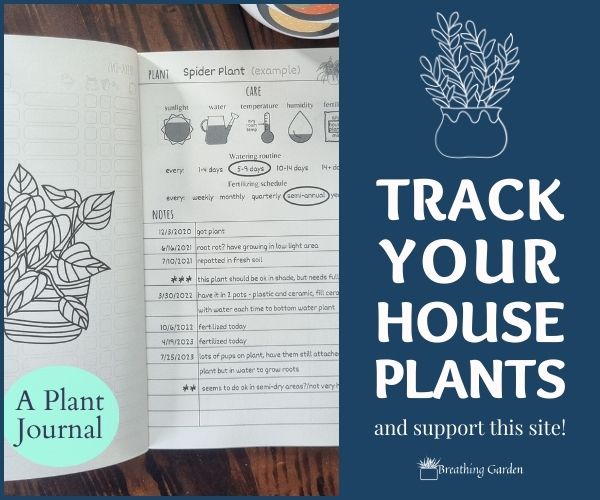If you’re like many lavender growers, you may be wondering why your lavender plant is turning grey. The foliage on lavender plants can turn grey for a variety of reasons, but most often it’s due to one of two factors: environmental stress or disease. In this post, we will explore the possible reasons for your lavender plant turning grey, and discuss ways to bring color back to your lavender plants!
*This post may include affiliate links. When you purchase items from these links, we will receive a small commission, at no extra cost to you, to help support this website. Thank you for your support! Read more ->
(Keep in mind – this is about lavender that’s turning grey, not a greyish lavender variety, which some are)
Environmental Stress
Environmental stress can cause lavender plants to turn grey, as it inhibits their ability to photosynthesize and produce chlorophyll.
Common environmental stresses include prolonged drought, overwatering, nutrient deficiency, temperature extremes (too hot or too cold), and heavy winds. If your lavender plant is turning grey due to environmental stress, the best way to help revive the plant is to provide it with the conditions it needs. This includes ensuring that your lavender plant receives enough sunlight, water and nutrition, as well as avoiding extreme temperature changes.
Diseases
While a lot has to do with environmental stress causing your lavender plant turning grey, one of the most likely reasons for having a greyish lavender is disease. More specifically, fungal disease/infection. Often this fungal infection is occurring in the roots, from too much moisture in the soil or around the plant. This fungal infection can spread to the leaves, leading to grey and yellow discoloration.
The best way to prevent this type of fungal disease is by providing your lavender plant with adequate drainage in the soil, and not in too humid of a location. Make sure that your lavender’s container has plenty of drainage holes, and be sure to water your lavender only when it’s dry.
Getting Rid Of The Fungal Infection
If it’s a fungal infection, you want to try and get rid of the fungus. One of the easiest ways to do that is to remove the part that is causing the problems, if it seems localized to one area of the plant.
If the entire plant is grey, it’s time to look at the roots.
Tip: if you’re unsure if the entire plant is dead, or it’s just going through something, cut into a part of the plant or snap off a stem. If the inside where you cut/snapped off is green, the plant is still alive. If it’s brown, your plant, or that area of the plant, is dead.
Do A Root Check For Lavender Turning Grey
If you think it’s a problem with the roots, it’s time to take your plant out of the soil if you can. Be gentle with the roots. While you’re doing this, if the soil feels soggy, your plant has likely had too much water and that’s the problem.
Try to remove as much soil from the roots as you possibly can, think of it as detangling long hair trying to get the knots out, but in this case the knots are soil.
Check the roots – they should be dark brown and firm or a white color. If they aren’t, you’ve got a problem! If they are soggy and limp, this can also be root rot. Remove the bad roots with clean pruning shears.
Regardless of what you’re noticing, this is an important time to change the soil out to fresh soil in the pot, or repot your lavender altogether into a new container with new soil. Make sure it’s quick draining soil and the pot has plenty of drainage holes.
You may also be interested in: French Lavender, Spanish Lavender
In Summary
It can be difficult to determine why your lavender plant is turning grey. However, it’s usually due to environmental stress or disease. To help revive a stressed out lavender plant, provide it with the conditions it needs. If the issue is caused by fungal infection in the roots, you may need to remove part of the infected area and repot into fresh soil that drains well.
In any case, make sure you’re taking care of your lavender plants properly so they stay healthy!



